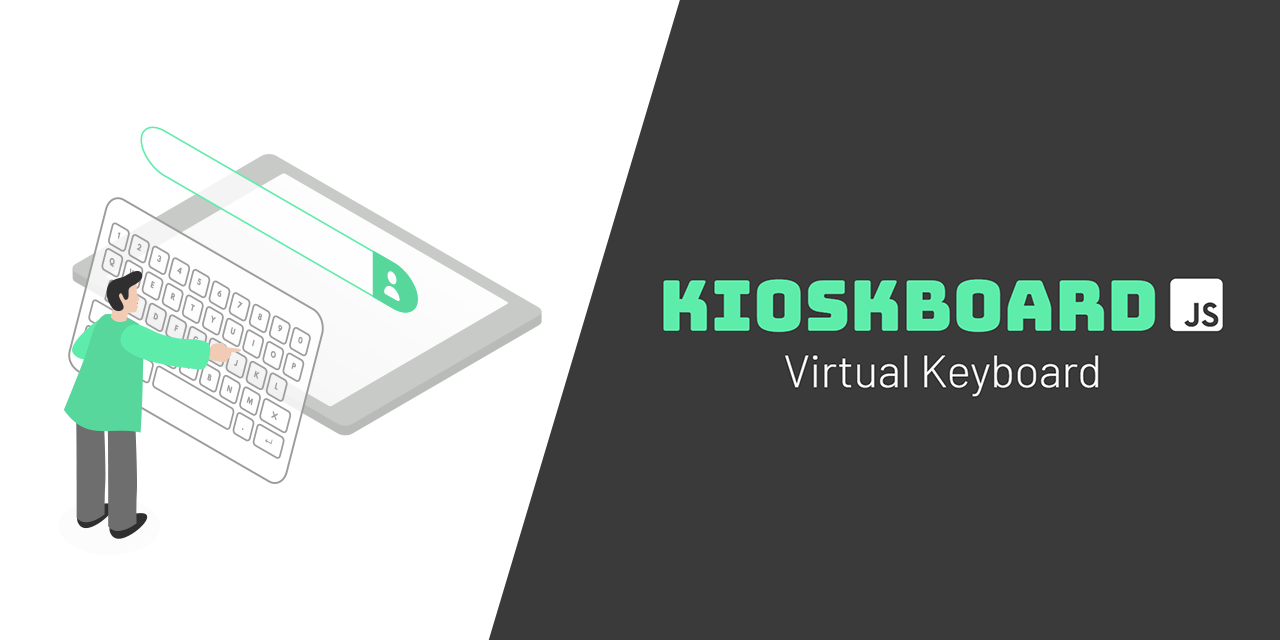



KioskBoard - Virtual Keyboard
A pure JavaScript library for using the Virtual Keyboard.
Current Version
1.4.0 *
Documentation and Demo
https://furcan.github.io/KioskBoard/
Browser Compatibility
Chrome - Firefox - Safari - Opera - Edge - IE 11
(A) Install & Import
Install
npm i kioskboard
yarn add kioskboard
Import
import KioskBoard from "kioskboard";
(B) Adding to an HTML Document
CSS and JS
<link rel="stylesheet" href="dist/kioskboard-1.4.0.min.css" />
<script src="dist/kioskboard-1.4.0.min.js"></script>
Or only JS (All in One - Internal CSS)
<script src="dist/kioskboard-aio-1.4.0.min.js"></script>
Keyboard Types and Themes
3 types of keyboards can be used: all, keyboard, and numpad.
5 types of themes can be used. light, dark, flat, material, and oldschool.
Initialize / Run
KioskBoard Virtual Keyboard can be used with the input or textarea elements. KioskBoard must be initialized with the required options. The other options are optional. The keyboard type data-kioskboard-type and special characters data-kioskboard-specialcharacters settings are each element-based (data attributes). All options and examples of data attribute usages are as below. Also, a custom class name can be defined for all input or textarea elements to run KioskBoard.
HTML => (data-* options)
<textarea class="virtual-keyboard" data-kioskboard-type="all" data-kioskboard-specialcharacters="true" placeholder="Your Address"></textarea>
<input class="virtual-keyboard" data-kioskboard-type="keyboard" data-kioskboard-specialcharacters="false" placeholder="Your Name" />
<input class="virtual-keyboard" data-kioskboard-type="numpad" placeholder="Your Number" />
JS => (Step1: Initialize)
KioskBoard.Init({
keysArrayOfObjects: null,
keysJsonUrl: null,
specialCharactersObject: null,
language: 'en',
theme: 'light',
capsLockActive: true,
allowRealKeyboard: false,
cssAnimations: true,
cssAnimationsDuration: 360,
cssAnimationsStyle: 'slide',
keysAllowSpacebar: true,
keysSpacebarText: 'Space',
keysFontFamily: 'sans-serif',
keysFontSize: '22px',
keysFontWeight: 'normal',
keysIconSize: '25px',
allowMobileKeyboard: false,
autoScroll: true,
});
JS => (Step2: Run)
KioskBoard.Run('.virtual-keyboard');
OR
JS => (Run with Init - v1.4.0 and the next versions)
KioskBoard.Run('.virtual-keyboard', {
});
Merge
KioskBoard.Merge({}); function has been deprecated. (v1.4.0 and the next versions)
Language (JSON)
If custom keys are not defined with the keysArrayOfObjects option, the keysJsonUrl option can be used. Can create an Array of Objects for custom keys related to a custom language. Expecting JSON format is like [{"key":"value", "key":"value"}, ...] Each object in that array creates a row element (HTML) on the keyboard. The "key" in the objects is an "index" for each Keyboard Keys. Also, the "value" is each key's value and text.
Additionally, KioskBoard includes 7 different language packages: English Turkish Spanish German French Hungarian Russian
An example of a JSON file (for custom keys) is as below.
[
{
"0":"Q",
"1":"W",
"2":"E",
"3":"R",
"4":"T",
"5":"Y",
"6":"U",
"7":"I",
"8":"O",
"9":"P"
},
{
"0":"A",
"1":"S",
"2":"D",
"3":"F",
"4":"G",
"5":"H",
"6":"J",
"7":"K",
"8":"L"
},
{
"0":"Z",
"1":"X",
"2":"C",
"3":"V",
"4":"B",
"5":"N",
"6":"M"
}
]
Copyright
Copyright © 2021 KioskBoard - Virtual Keyboard
License
MIT license - https://opensource.org/licenses/MIT






